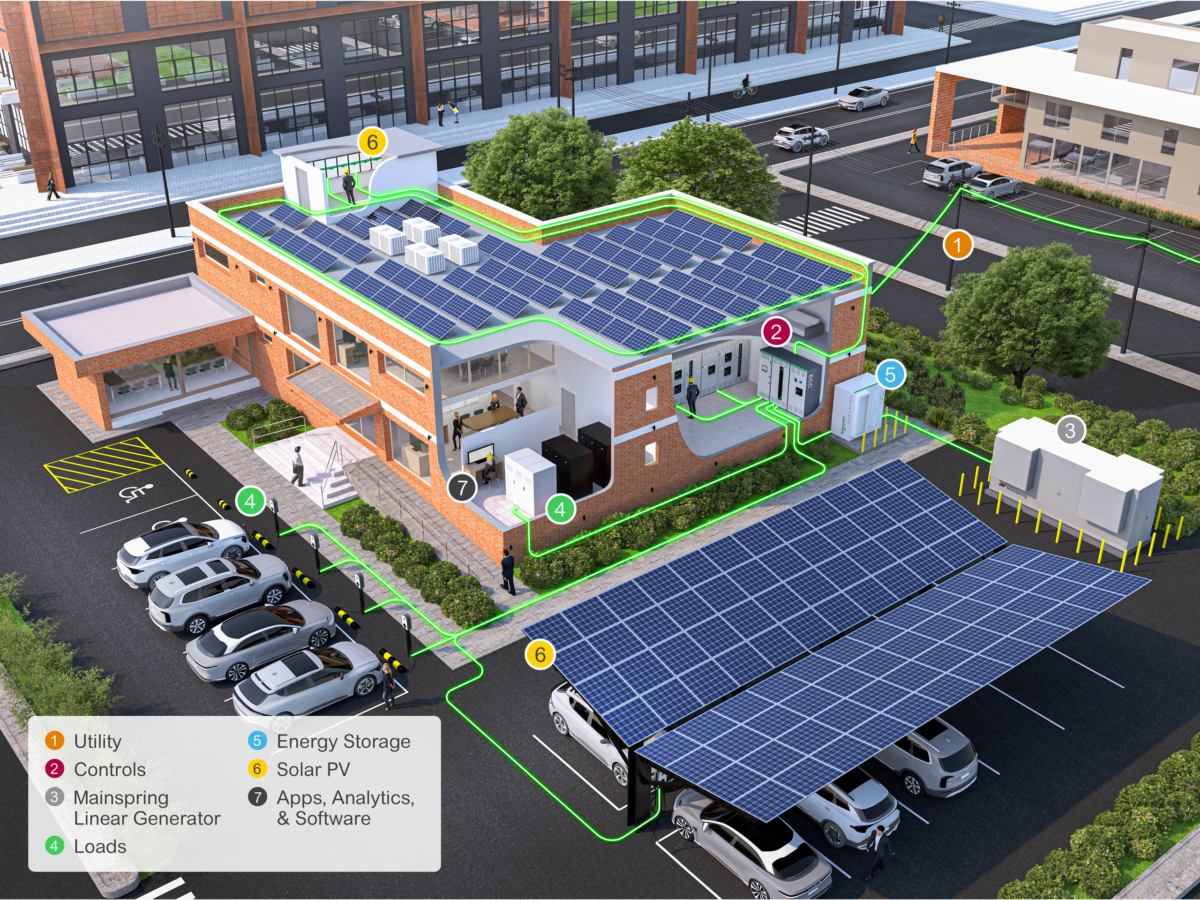The U.S. energy grid is under unprecedented strain, driven by surging demand from data centers supporting artificial intelligence (AI) and the rapid adoption of electrification and electric vehicles (EVs). As these two sectors expand, their combined power needs are propelling the nation’s energy consumption to new highs, forcing the grid to adapt to sustain modern technological and environmental ambitions.
The rapid advancement of AI-powered data centers alone is expected to account for 8% of the U.S.’s total energy consumption by 2030, up from 3% in 2022, while energy usage from EV infrastructure is also rising dramatically. This trend has escalated the need to fortify the energy grid, ensuring it can handle the demands of a digitally connected, electrified future. Meeting these rising energy requirements while maintaining grid stability is no small feat. It requires adopting innovative energy strategies like distributed energy resources (DERs) and microgrids, which offer viable solutions for a more resilient, responsive energy infrastructure.
Data centers, EVs, and the grid’s growing complexity
The transformation of energy infrastructure is particularly urgent in places like “data center alley” in Virginia, where power demands are peaking. Data centers—the lifeblood of AI and cloud computing—are clustered in such areas, pushing grid capacity to its limits. Meanwhile, the surge in EVs is exerting similar pressures on local grids, as the demand for EV charging infrastructure explodes, especially in high-density regions like Los Angeles and the Bay Area.
This dual pressure from AI and EVs doesn’t merely reflect a need for more energy; it also complicates the logistics of power distribution, especially as utilities aim to reduce carbon emissions and bolster grid security. Extreme weather events and climate impacts have further underscored the necessity of a resilient grid capable of handling both expected and sudden demands. The grid’s evolution, however, doesn’t stop at adding capacity, it requires an agile, distributed model that supports local power generation and rapid response to demand fluctuations.
The role of microgrids in a resilient future
Microgrids have emerged as essential tools in the quest for a more sustainable, resilient energy system. Unlike traditional grids that rely on large, centralized power plants, microgrids operate as self-contained networks that can generate, store, and use electricity on-site. This ability allows them to maintain operations independently from the main grid during power outages or when energy demand surges. Microgrids also offer the flexibility to integrate renewable energy sources like solar and wind, which aligns well with decarbonization goals while adding a layer of energy independence.
Microgrids are designed to provide three main benefits: ensuring energy resilience, enhancing cost predictability, and integrating clean energy resources. For example, JFK Airport’s smart grid—incorporating solar power and on-site battery storage—provides energy backup during disruptions, demonstrating how critical infrastructure can maintain operations even when the central grid falters. Such models underscore the value of microgrids as a solution for facilities and communities aiming to fortify themselves against outages and grid instability.
The deployment of microgrids is also a compelling economic opportunity. By generating and storing energy locally, organizations and communities gain control over energy costs, reduce reliance on external power, and can even sell surplus power back to the main grid. For facilities managing high-demand operations, such as data centers, these capabilities add reliability while also supporting sustainability by using renewable power.
Overcoming barriers to widespread microgrid adoption
Despite their potential, microgrids face hurdles that have limited their widespread adoption across commercial, industrial and infrastructure applications. Regulatory complexity, high upfront costs, and a lack of standardized systems have hampered microgrid scalability. Unlike solar or wind projects that benefit from federal-level incentives and streamlined regulations, microgrid policies vary widely by state, creating uncertainty for investors and operators. Current microgrid projects are often custom engineered, resulting in prolonged deployment timelines and significant costs, typically ranging between $2 to 5 million per megawatt.
To overcome these obstacles, energy innovators are exploring new financial models like “energy as a service” (EaaS), which can make microgrids more financially accessible by spreading costs over time and bring in the expertise to further manage complexity and risk. The introduction of standardized, modular microgrid solutions is also expected to transform the industry. By using pre-designed, pre-tested systems with integrated battery storage and energy management software, microgrid deployment can be shortened from years to months, slashing both costs and complexity. These standard solutions can help scale microgrid deployment across industries, from public infrastructure to private corporations, making them feasible for a broader array of users.
Envisioning a decentralized, resilient energy landscape
The grid of the future will likely be a decentralized network of microgrids and DERs, which can dynamically manage power loads, optimize renewable energy use, and reduce reliance on fossil fuels. This transformation can create an adaptable system that not only meets the energy demands of data centers and EV infrastructure but does so sustainably and efficiently. Decentralizing power generation—by empowering communities and facilities to produce and manage their own energy—will also support national goals for decarbonization, economic growth, and energy security.
The journey to a sustainable, resilient energy infrastructure is both a necessity and an opportunity. By leveraging microgrids and other DERs, the U.S. can build a grid that isn’t just stronger but also smarter and able to meet the dynamic demands of an AI-powered, electrified future. This energy transition, though challenging, represents a pivotal moment to redefine what the grid can be, ensuring it supports innovation, withstands the pressures of climate change, and propels us into a clean energy era that is as resilient as it is efficient.

Jana Gerber is microgrid president, North American region for Schneider Electric. She is responsible for growing the commercial microgrid business in North America and supporting customers in their sustainability and resilience journeys.

Rohan Kelkar is the executive vice president of Schneider Electric’s Power Products global business. With more than two decades of experience leading multinational corporations, Rohan leads the division’s electrical distribution portfolio responsible for championing innovative solutions and delivering more sustainable, efficient, connected, and circular products to the market.
The views and opinions expressed in this article are the author’s own, and do not necessarily reflect those held by pv magazine.
This content is protected by copyright and may not be reused. If you want to cooperate with us and would like to reuse some of our content, please contact: editors@pv-magazine.com.








By submitting this form you agree to pv magazine using your data for the purposes of publishing your comment.
Your personal data will only be disclosed or otherwise transmitted to third parties for the purposes of spam filtering or if this is necessary for technical maintenance of the website. Any other transfer to third parties will not take place unless this is justified on the basis of applicable data protection regulations or if pv magazine is legally obliged to do so.
You may revoke this consent at any time with effect for the future, in which case your personal data will be deleted immediately. Otherwise, your data will be deleted if pv magazine has processed your request or the purpose of data storage is fulfilled.
Further information on data privacy can be found in our Data Protection Policy.